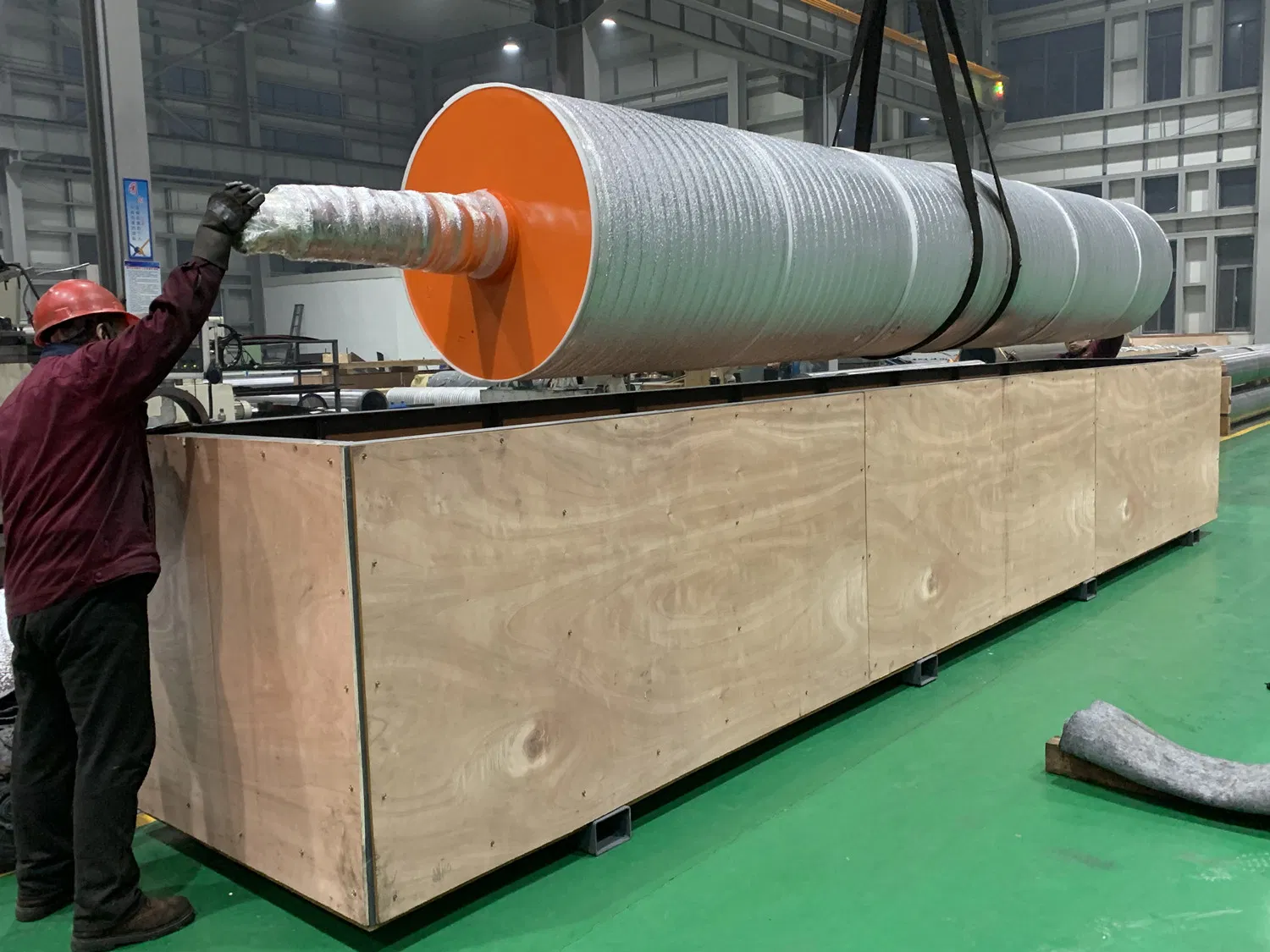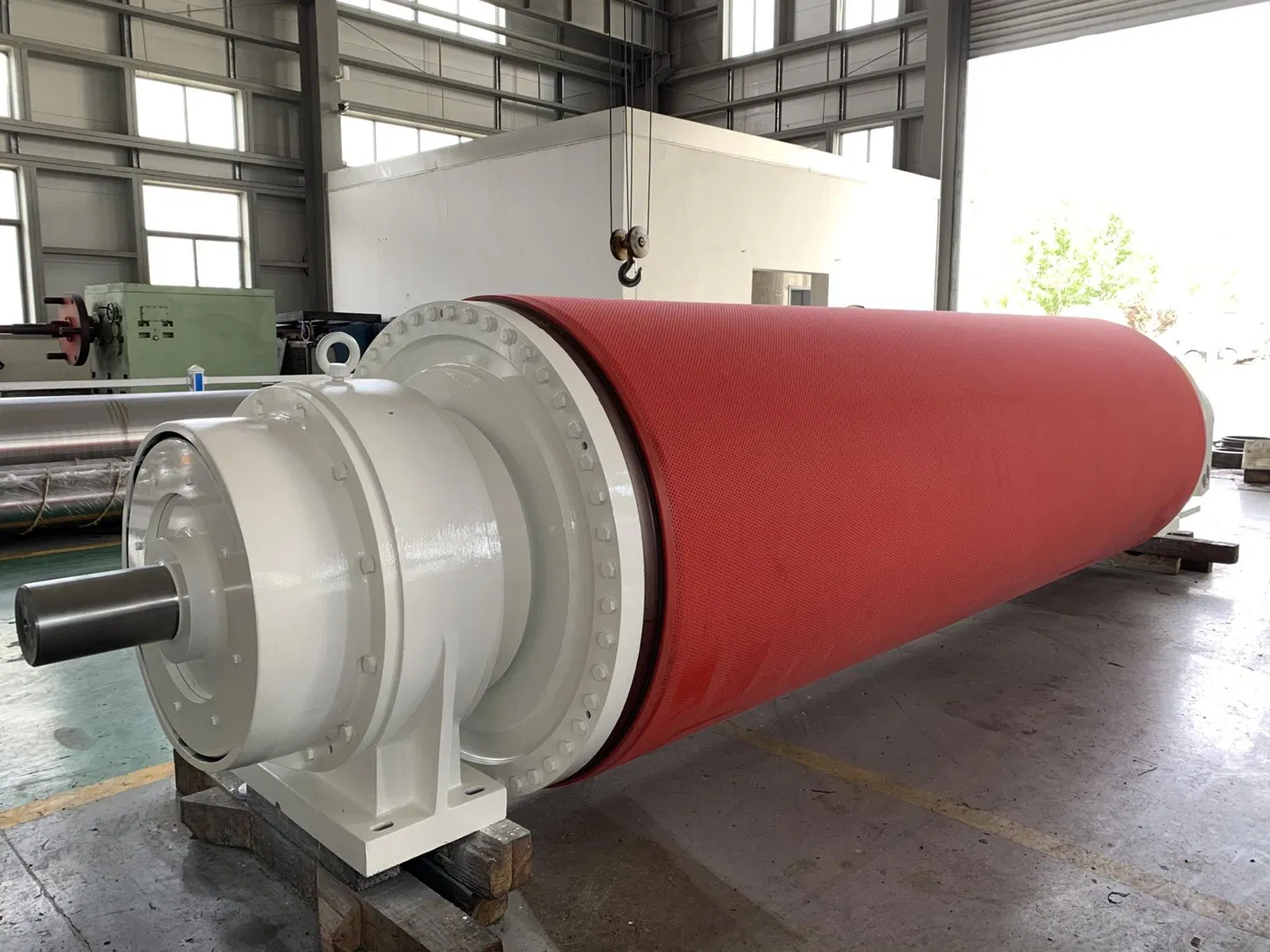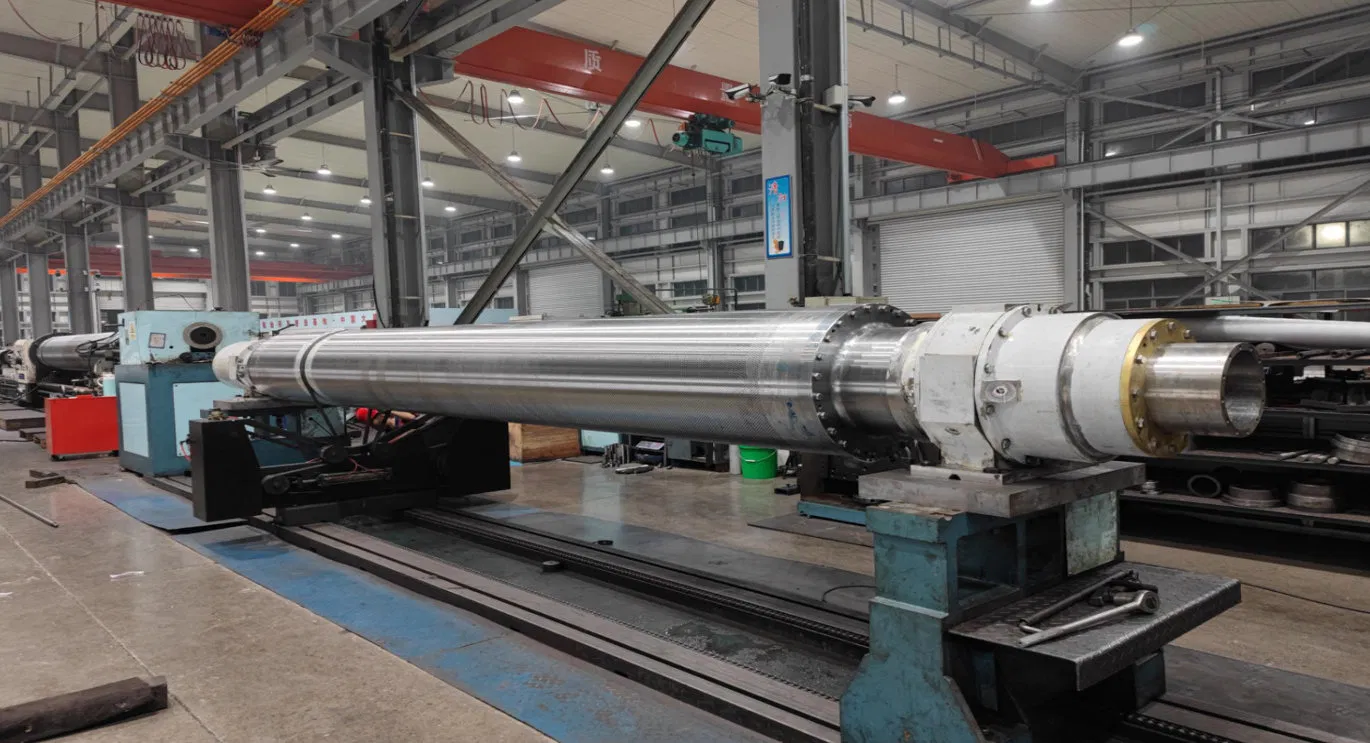Introduction: The Critical Role of Roll Covers in Papermaking
In the intricate and high-speed world of papermaking, every component of the paper machine plays a pivotal role in determining the final product's quality, the line's efficiency, and the overall operational profitability. Among these components, the roll covers are unsung heroes. A roll cover is a specialized, resilient layer applied to the surface of a metal roll core. Its function extends far beyond simply protecting the core; it is a high-performance engineering surface that directly influences sheet dewatering, surface finish, web handling, and machine uptime. The choice of roll cover material is therefore not a trivial decision but a critical strategic one that can impact everything from energy consumption to the saleable quality of the paper produced.
The demands placed on a roll cover are immense and varied. It must withstand extreme pressures in the press section, high temperatures in the dryer section, and constant chemical exposure from the pulp slurry and cleaning agents. It needs to provide the right balance of hardness, elasticity, and surface texture to gently handle the delicate paper web while efficiently performing its function, whether that's squeezing out water or imparting a smooth finish. This is where a detailed paper machine roll cover material comparison becomes essential for any mill manager, maintenance supervisor, or purchasing agent looking to optimize their operations. Understanding the distinct properties, advantages, and limitations of materials like rubber, polyurethane, and advanced composites is the first step toward maximizing performance and achieving a lower total cost of ownership. As a leading manufacturer, we provide not just the products, but the expertise to help you navigate these complex choices for both large-scale industrial and smaller, individual purchase needs.
Material Deep Dive: A Detailed Analysis of Common Roll Cover Materials
The selection of a roll cover material is a science. Each material offers a unique profile of mechanical, thermal, and chemical properties. Choosing the correct one requires a thorough understanding of how these properties align with the specific demands of a roll's position and function within the paper machine. Below, we explore the primary material families used for roll covers.
1. Rubber Roll Covers (Natural and Synthetic)
Rubber has been a traditional and widely used material for roll covers for decades, valued for its versatility and cost-effectiveness. It is not a single material but a broad category of elastomers, each with distinct characteristics.
- Properties: Rubber covers are known for their excellent elasticity and vibration-damping capabilities. They can be formulated across a wide range of hardness levels (measured in P&J or Shore A). Key synthetic types include Nitrile (NBR), known for its oil and abrasion resistance; EPDM, valued for its resistance to heat, steam, and chemicals; and SBR, a general-purpose, cost-effective option.
- Advantages: The primary advantage of rubber is its economic value and proven performance in a variety of non-demanding positions. Its compliant nature provides a "soft" nip, which can be beneficial for certain paper grades and press configurations. The formulation can be easily tuned to achieve specific surface properties.
- Limitations: Compared to more advanced materials, rubber covers generally have a lower resistance to wear, abrasion, and high-impact loads. This can lead to shorter service intervals for grinding and recovering, increasing maintenance costs over time. They are also more susceptible to damage from wad-ups and can experience swelling or degradation when exposed to aggressive chemicals.
2. Polyurethane (PU) Roll Covers
Polyurethane represents a significant step up in performance from traditional rubber. It is a highly versatile polymer that can be engineered to deliver exceptional durability and mechanical strength, making it a preferred choice for many demanding applications in modern, high-speed paper machines.
- Properties: The hallmark of polyurethane is its outstanding abrasion and tear resistance, which is often several times greater than that of rubber. It possesses a high load-bearing capacity, allowing it to withstand extreme nip pressures without permanent deformation. PU covers maintain their physical properties over long operational periods and offer excellent resistance to many oils and solvents.
- Advantages: The superior durability of PU translates directly into longer run times between maintenance shutdowns, significantly improving machine efficiency and reducing the total cost of ownership. Its toughness makes it highly resistant to cuts, gouges, and damage from machine upsets. Furthermore, specific PU formulations can be developed to optimize sheet release, reducing web breaks and improving runnability.
- Limitations: The initial investment for a polyurethane cover is typically higher than for a rubber one. While offering broad chemical resistance, certain PU formulations can be susceptible to hydrolysis (breakdown by hot water or steam), making material selection critical for hot, wet environments like high-temperature press positions.

3. Composite Roll Covers
Composite covers are at the cutting edge of roll technology, designed for the most challenging positions where rubber and polyurethane may reach their performance limits. These materials typically consist of a polymer matrix (like epoxy or vinyl ester) reinforced with fibers such as fiberglass, carbon fiber, or aramid.
- Properties: Composites deliver an unparalleled combination of high stiffness, dimensional stability, and low weight. They are exceptionally hard and wear-resistant, maintaining their precise crown profile for very long periods. Carbon fiber-reinforced composites, in particular, offer superior thermal stability and conductivity.
- Advantages: The extreme durability of composite covers ensures maximum time between regrinds, making them ideal for critical, hard-to-access rolls. Their high stiffness and stability under load help to create a uniform nip pressure profile, which can improve sheet moisture profiles and overall paper quality. They are virtually impervious to most chemicals found in the papermaking process.
- Limitations: Composite covers carry the highest initial cost. Their hardness and stiffness, while advantageous for performance, mean they have very little give, making the machine setup and alignment more critical. The manufacturing and recovering process is also more complex and specialized.
Key Factors for Selecting the Right Roll Cover Material
A successful paper machine roll cover material comparison goes beyond just looking at material data sheets. It involves a holistic analysis of the application's specific requirements. As your manufacturing partner, we guide our clients—from large corporations to individual buyers—through this critical selection process, considering the following factors.
- Machine Position and Function: The demands on a forming roll are vastly different from those on a calender roll. A press roll requires high pressure resistance and good dewatering, while a winder drum needs excellent grip and wear resistance. We analyze the specific role to recommend the optimal material. For example, a high-load shoe press roll will almost certainly demand a high-performance polyurethane or composite cover.
- Operating Conditions: Key parameters include machine speed, nip loading (pressure), and operating temperature. Higher speeds and pressures favor tougher, more resilient materials like polyurethane. In the dryer section, thermal stability is paramount, making materials like EPDM or specialized composites more suitable.
- Chemical Environment: The pH of the stock, the types of sizing agents, and the cleaning chemicals used all impact material longevity. A comprehensive chemical compatibility check is crucial to prevent premature cover degradation, swelling, or hardening.
- Paper Grade and Desired Finish: The type of paper being produced—from delicate tissue to heavy linerboard—influences the required surface characteristics. A soft, smooth surface might be needed for fine papers to avoid marking, whereas a textured or grooved surface is necessary for efficient dewatering in board production.
- Total Cost of Ownership (TCO): While initial purchase price is a consideration, a smarter approach focuses on TCO. A more expensive polyurethane cover that runs twice as long as a rubber cover between regrinds offers superior value by reducing maintenance labor, minimizing downtime, and increasing production output. We help clients model this to make the most financially sound decision.

Our Manufacturing Excellence and Quality Assurance
As a premier supplier and manufacturer, our commitment to quality is embedded in every stage of our process, from raw material sourcing to final inspection. We understand that the reliability of your paper machine depends on the reliability of our products, and we have built our reputation on delivering uncompromising quality to every customer, whether they are placing a large wholesale order or a single-unit purchase.
Our production facility is equipped with state-of-the-art polymer casting and roll covering application systems. We utilize computer-controlled processes to ensure perfect bonding between the cover and the roll core—a critical factor for preventing delamination under high stress. Our grinding and finishing capabilities are second to none, employing advanced CNC grinders to achieve precise crown profiles, diameters, and surface finishes to within micron-level tolerances.
Quality control is not just a final step; it is an integrated part of our manufacturing philosophy. Every single roll cover we produce undergoes a battery of tests. This includes non-destructive testing of the bond, verification of hardness across the entire roll face, and laser-based dimensional profiling to ensure it meets all design specifications. This rigorous QA process guarantees that when you receive a roll cover from us, it is ready for immediate installation and peak performance. Our continuous investment in research and development also allows us to offer innovative solutions and custom formulations tailored to solve unique operational challenges.
Applications Across the Papermaking Process
The right material in the right place is the key to a well-running machine. Our deep expertise in the complete paper machine roll cover material comparison allows us to provide optimized solutions for every section of the paper machine.
- Forming Section: For suction couch rolls and forming rolls, covers must be wear-resistant and maintain their grooving or drilling patterns. We often recommend durable rubber or specialized PU formulations.
- Press Section: This is the most demanding section. For suction press rolls, grooved rolls, and shoe press rolls, high-performance polyurethane is the dominant choice due to its ability to withstand immense pressures and its superior dewatering characteristics. Composites are used in the most extreme applications.
- Dryer Section: For rolls leading into and out of the dryer section, covers must resist high temperatures and maintain good sheet release properties. Specially formulated EPDM rubber or silicone covers are often employed.
- Finishing and Winding: Calender rolls require extremely hard, smooth surfaces to impart gloss and smoothness to the paper, making composites or hard polymer covers ideal. Winder drums need covers with excellent grip and extreme wear resistance to handle the finished parent rolls, a perfect application for tough polyurethane.

Your Partner for All Roll Cover Needs: Wholesale and Individual Orders
We pride ourselves on being a flexible and customer-centric manufacturer, capable of serving the entire spectrum of the paper industry. Whether you are a large, multi-machine mill requiring a comprehensive roll cover management program or a smaller operation needing a single replacement roll, we provide the same high level of service, quality, and technical expertise.
We welcome both wholesale and individual retail orders, offering flexible Minimum Order Quantities (MOQs) to accommodate your specific needs. Our engineering team thrives on collaboration and is ready to work with you on customization. We can develop custom material formulations, design unique grooving patterns, and engineer covers for novel applications. Our goal is to provide a solution, not just a product.
Our partnership extends beyond the sale. We offer comprehensive after-sales support, including installation guidance, performance monitoring, and expert advice on maintenance and regrinding schedules. Our technical service team is always available to help you troubleshoot issues and optimize the performance of your roll covers. Choosing us as your supplier means gaining a partner dedicated to the efficiency, quality, and profitability of your papermaking operations.
For more detailed information, please visit our official website:paper machine roll covers
About the author: Dr. Alistair Finch has over 25 years of experience in polymer science and its application in industrial manufacturing. Specializing in high-performance elastomers and composites for the paper industry, his research focuses on developing roll cover materials that enhance machine efficiency and product quality. Dr. Finch is a leading voice in optimizing the total cost of ownership through advanced material selection and is a key consultant for our most demanding client projects.


